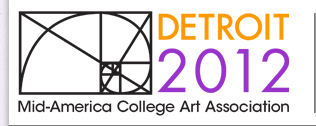Session Title
Contemporary Feminist Art: Old Themes, New Variations
Start Date
5-10-2012 1:15 PM
End Date
5-10-2012 2:45 PM
Session Description
In 1971, Linda Nochlin asked: “Why have there been no great women artists?” Forty years later, feminist art practice has become as an important area of study in museums and universities across the globe, highlighted by the founding of the Center for Feminist Art at the Brooklyn Museum and the ground breaking exhibition “Wack! Art and the Feminist Revolution.” Feminist art, which can be traced back to the early 1960s as part of second wave feminism, was a rallying cry to subvert the foundations of the art establishment. These early pioneers developed a visual rhetoric focused on the female body as a site for social and cultural commentary and reassessing what has been described as the erotic, the sacred, and the taboo – these pioneers included, Ida Applebroog, Joan Jonas, Shigeko Kubota, Lorraine O’Grady, Yoko Ono, Betye Saar, Carolee Schneemann, Nancy Spero, and Martha Wilson, amongst others.
This panel will assess a younger generation of artists and their relationship to the feminist art practices of the 1960s and 70s. How has feminist art developed and changed over the past six decades? What issues continue to dominate the field of feminist art? What has happened to the female body in art, where has it gone and what are its political and social implications today? Of particular interest are presentations addressing the work of feminist artists, or artists “read” as feminist, who have been marginalized or underrepresented: women of color, Latin- and Asian-American artists, LGBT artists. Exploratory themes will be presented by art historians, curators, and interdisciplinary scholars.
List 1 and 2
Contemporary Feminist Art: Old Themes, New Variations
In 1971, Linda Nochlin asked: “Why have there been no great women artists?” Forty years later, feminist art practice has become as an important area of study in museums and universities across the globe, highlighted by the founding of the Center for Feminist Art at the Brooklyn Museum and the ground breaking exhibition “Wack! Art and the Feminist Revolution.” Feminist art, which can be traced back to the early 1960s as part of second wave feminism, was a rallying cry to subvert the foundations of the art establishment. These early pioneers developed a visual rhetoric focused on the female body as a site for social and cultural commentary and reassessing what has been described as the erotic, the sacred, and the taboo – these pioneers included, Ida Applebroog, Joan Jonas, Shigeko Kubota, Lorraine O’Grady, Yoko Ono, Betye Saar, Carolee Schneemann, Nancy Spero, and Martha Wilson, amongst others.
This panel will assess a younger generation of artists and their relationship to the feminist art practices of the 1960s and 70s. How has feminist art developed and changed over the past six decades? What issues continue to dominate the field of feminist art? What has happened to the female body in art, where has it gone and what are its political and social implications today? Of particular interest are presentations addressing the work of feminist artists, or artists “read” as feminist, who have been marginalized or underrepresented: women of color, Latin- and Asian-American artists, LGBT artists. Exploratory themes will be presented by art historians, curators, and interdisciplinary scholars.



Related Paper(s)
Emerson, Melanie E. Elke Krystufek and the Obessive Production of Person (http://digitalcommons.wayne.edu/macaa2012scholarship/14).